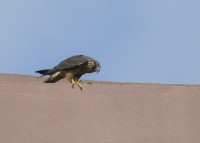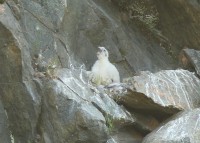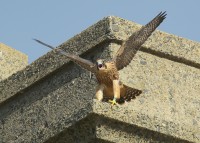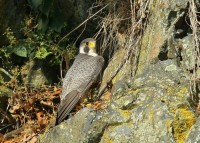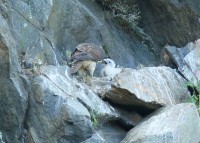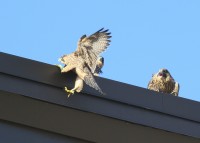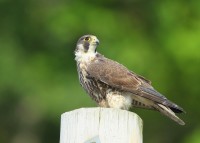Peregrine Falcon: Woburn chick being fed
June 21, 2016 in Peregrine Falcon Woburn
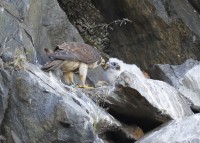 The single peregrine falcon chick continues to grow with quite an appetite! Stopped by an hour before sunset last night to observe the male dropping off prey, and the female feeding the chick at the nest!
The single peregrine falcon chick continues to grow with quite an appetite! Stopped by an hour before sunset last night to observe the male dropping off prey, and the female feeding the chick at the nest!
The chick is now approaching 4 weeks old. The facial pattern behind the eyes is becoming increasingly
evident. Some coloration is becoming visible on the upper breast as the juvenile feathers develop
beneath the down. The legs are now just about fully developed.
In this fourth week of life, the chick is undergoing significant changes almost daily. The colored feathers visible
on the breast will increase noticeably. As the juvenile feathers grow, the chick will look a bit darker each day.
4 feeding photos posted:
http://www.pbase.com/birdshots/image/163514907
Click “next” in upper right corner to advance frames
